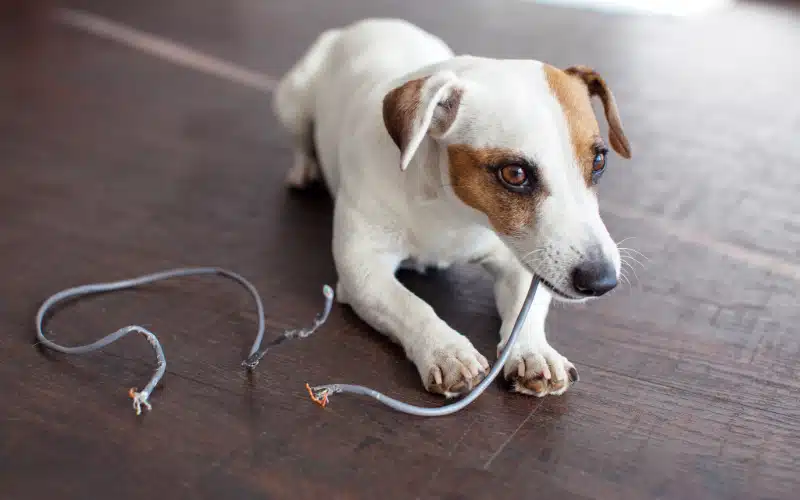
Beat the Heat: Avoiding Heat Stroke in Dogs and Cats
You’re at the beach, and your dog is running around with another young dog having a great time. After about 5 minutes, you notice your dog panting heavily, drooling, and appearing weak. He doesn’t want to jump into the car for the ride home. You lift him in, and he seems subdued and quiet on the ride home. Should you be concerned? Yes! Your dog may be suffering from heat stroke and needs an immediate trip to the nearest veterinary emergency hospital.
And no, we’re not being dramatic. Heat stroke is a life-threatening condition and occurs when a pet can no longer lower its internal body temperature. An average dog’s temperature is 101.5 degrees Fahrenheit, and a degree up or down is no big deal. But cellular damage can occur if a pet’s temperature rises above that, so getting your pet to one of our 24/7 emergency veterinary hospitals – Animal Emergency Hospital Volusia or Animal Emergency Hospital DeLand – right away can save their life.
Here are some tips to avoid heatstroke in dogs and cats to prevent this devastating condition in your pets.
Heat Stroke 101
Heat stroke is most common in dogs, but cats can also suffer from overheating, which affects every organ in the body. Pets don’t sweat the way we do, so they can’t get rid of excess heat in their body quickly. Their fur coats make it even tougher to stay cool when temperatures and humidity are high. Panting is our pets’ primary method of dissipating heat, but when a hot, humid environment prevents the body from cooling itself, blood is diverted from major body organs, and they begin to fail.
The most common signs of heat stroke are:
- Excessive panting
- Salivating/drooling
- Rapid or irregular heartbeat
- Weakness
- Bright red or purple gums and tongue
- Vomiting and diarrhea
- Collapse
- Seizure
Preventing Heat Stroke in Pets
Sadly, one of the common causes of heat stroke is when pets are left in parked cars. Internal car temperatures can reach triple digits within minutes on a hot day, even when cars are parked in the shade or with cracked windows. So never leave pets in parked cars, even on mild days. The risk of heat stroke is just too real.
Other ways to prevent heat stroke:
- Limit exercise – During hot and humid weather, limit your pet’s activity or skip it altogether. For example, only walk your dog during the cool early morning or evening hours, and don’t let your dog participate in excessive running or strenuous play. Get their energy out by playing tug-of-war or doing some obedience exercises indoors.
- Provide ways to cool off – If you must be outdoors, be sure to provide lots of shade, time to rest in between play, and access to cool, fresh water at all times. In the heat of the day, ensure your pet can go indoors (preferably to air conditioning) whenever they wish.
- Stay indoors – In extreme heat, keep your pets in an air-conditioned room or home. Although some of us want to conserve energy by turning off air conditioners during the day, it’s best to keep settings at a cool but conservative temperature, even when you aren’t home (and your pets are). To keep your house cooler, close blinds or drapes in the morning to keep the sun’s rays out. Of course, indoor pets should always have access to fresh water. If your pet cannot come indoors, a garage or laundry room can provide some shelter from the heat in some cases. Call us if you have questions or concerns about outdoor pets.
- Care for pets at greater risk – Pets who are older, very young, and those with other health conditions are at greater risk when heat and humidity are high, so observe them carefully. Flat-faced breeds such as Pugs, Boston Terriers, English Bulldogs, Pekingese, and others, are particularly susceptible to heat stroke due to their shortened airways. Therefore, they should be kept indoors in hot weather.
What to Do If You Suspect Heat Stroke
If your pet appears weak after being outside, pants excessively, or can’t seem to get comfortable after being in the heat, get them to the veterinarian immediately. If you’re home, a quick cool-off with the garden hose on the groin and belly before you leave for the emergency clinic can help to start the cooling process, but never use ice or cold water, as this can cause significant problems. You can also use towels soaked in cool water to wrap around the paws, belly, and armpits for the trip to the veterinarian.
If you’re heading to AEHV, please call ahead of your arrival (386) 252-0206 so our team can prepare to start emergency treatment for heat stroke and life-saving measures as soon as you pull up.
Heat stroke in pets is scary and upsetting, so it’s best to prevent this problem from occurring. If you have questions or concerns, contact us.



